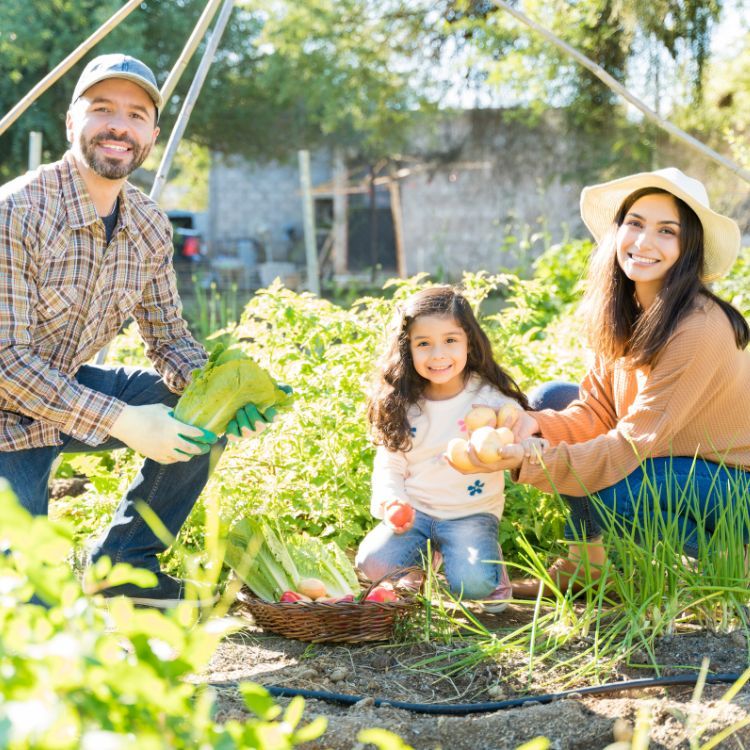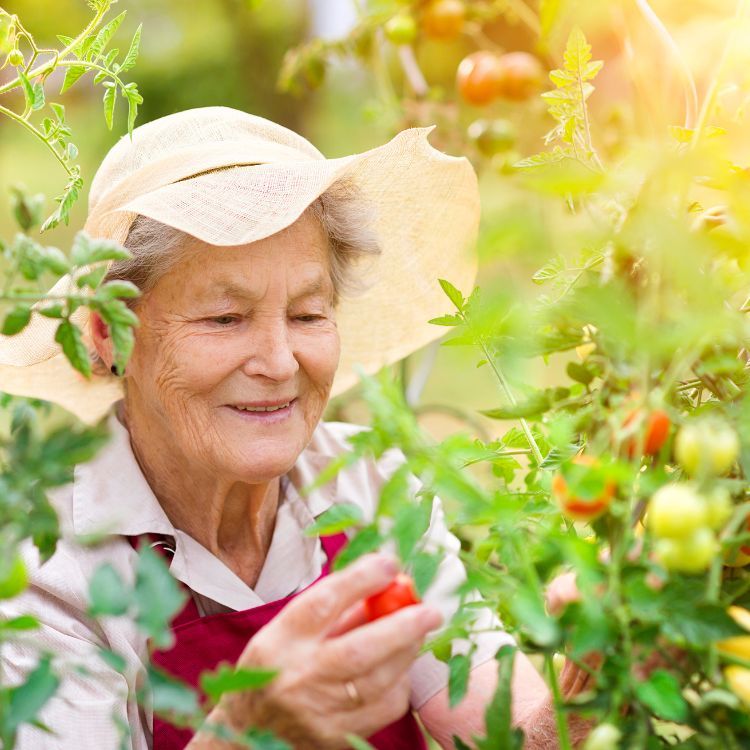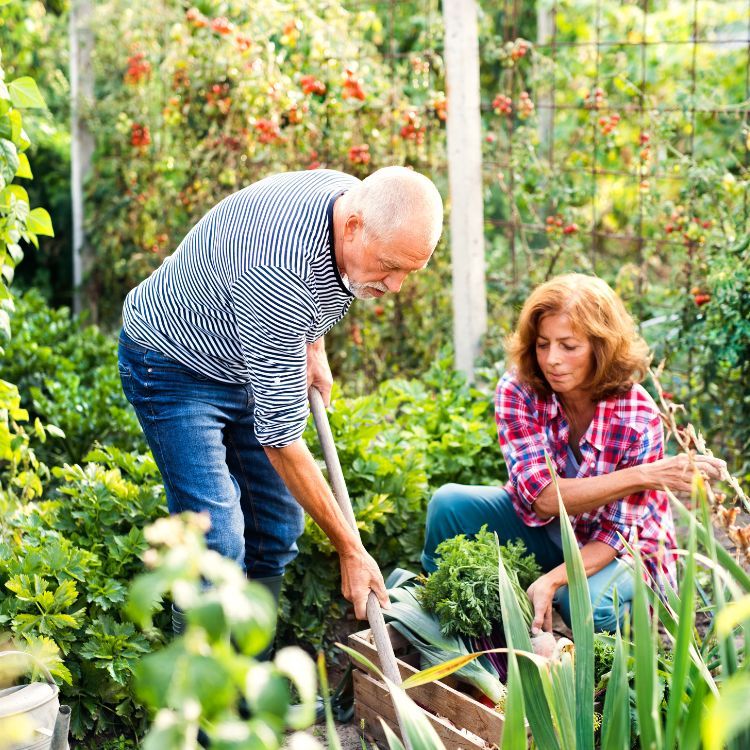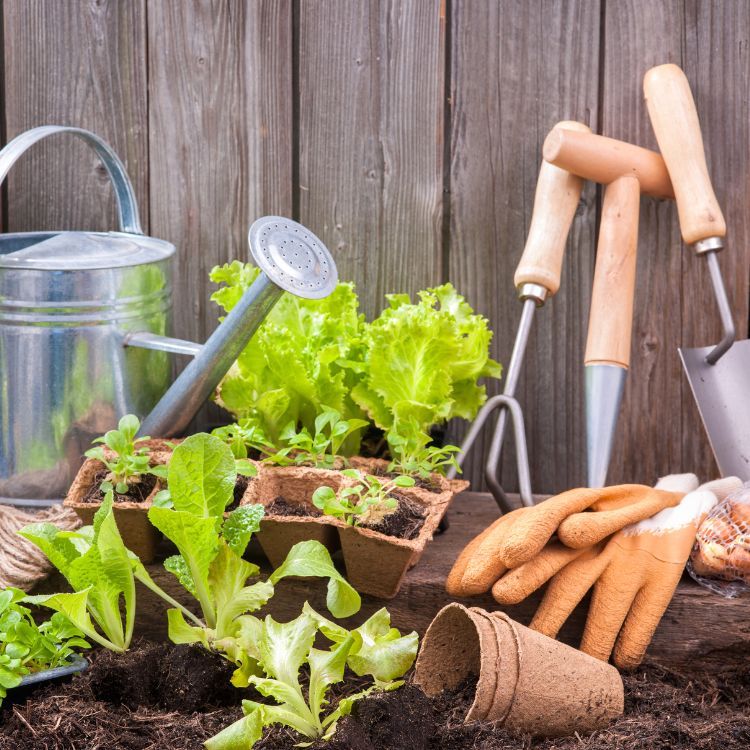
Key Takeaways
Survival gardening can enhance mood and reduce stress through outdoor activity and connection with nature.
Engaging in gardening activities serves as a moderate form of exercise, contributing to overall physical health.
Gardening can improve mental clarity and cognitive function, providing a peaceful and productive hobby.
Eating homegrown produce ensures a supply of fresh, nutrient-rich food, bolstering immunity and health.
Starting a survival garden requires careful planning, including site selection, choosing the right seeds, and implementing sustainable practices.
Reaping the Wellbeing Rewards of Survival Gardening
Have you ever felt the satisfaction of watching a seed you planted sprout into life? There’s a special kind of joy that comes from tending to a garden, especially one that could sustain you in times of need. This is the essence of survival gardening – a practice that not only secures a source of food but also offers numerous health benefits.
Boosting Your Mood with a Shovel
It’s no secret that spending time in nature can lift your spirits. When you dig your hands into the soil, you’re not just planting seeds; you’re also sowing the seeds of happiness. The physical act of gardening releases endorphins, the body’s natural feel-good chemicals, which can lead to a happier state of mind.
Besides that, survival gardening gives you a sense of purpose and accomplishment. Watching your plants grow and thrive under your care is incredibly rewarding and can boost your self-esteem.
Get outside and enjoy the fresh air while you work in your garden.
Take notice of the small changes each day as your plants grow.
Enjoy the satisfaction that comes from nurturing something from seed to harvest.
From Seeds to Vitality: Physical Health through Gardening
Don’t be fooled; gardening is a workout in disguise. From turning the compost to pulling weeds, you’re engaging in physical activity that strengthens your muscles and improves cardiovascular health. The best part? It’s a low-impact exercise, which means it’s accessible for most people and can be adjusted to your fitness level.
Moreover, the fruits, vegetables, and herbs you grow are packed with nutrients essential for maintaining good health. By incorporating these into your diet, you’re ensuring a regular intake of vitamins, minerals, and antioxidants that can help ward off diseases.
Mental Health Benefits of Survival Gardening

Survival gardening is not just about preparing for the worst; it’s also about enhancing your best. Tending to a garden requires focus and strategy, which can improve cognitive functions and provide mental clarity. The peaceful nature of gardening also offers a form of meditation, allowing you to de-stress and find tranquility.
“Digging in the dirt isn’t just therapeutic, it’s a connection to the cycle of life that can ground us in the present and soothe our overworked minds.”
Stress Reduction Techniques in the Garden
Gardening can be a sanctuary from the hustle and bustle of daily life. The repetitive tasks like weeding and watering create a rhythm that helps quiet the mind. The garden becomes a place where worries can be put aside, and stress melts away with each turn of the soil.
Start with a small gardening project to avoid feeling overwhelmed.
Set aside regular time for gardening to establish a routine that can help reduce stress.
Use gardening as a time to practice mindfulness, focusing on the sensations and tasks at hand.
Cognitive Clarity from Cultivating Crops
Planning a survival garden requires thought and foresight, which stimulates the brain. Deciding what to plant, when to plant it, and where each plant will thrive challenges your problem-solving skills. This mental exercise can keep your mind sharp and may even have long-term benefits for brain health.
Furthermore, the sense of control and autonomy you gain from managing your own food source can lead to greater mental well-being. Knowing that you have the skills to provide for yourself and your loved ones can be incredibly empowering.
Sustainable Happiness: Growing Your Own Peace of Mind
Survival gardening isn’t just about the physical sustenance; it’s also about cultivating a sustainable source of happiness and peace. The garden offers a place of refuge, a space where you can retreat and reconnect with the natural world. It’s a reminder that, even in uncertain times, you can create beauty and abundance.
Now, let’s dig into the physical health benefits of embracing survival gardening and how it can transform not only your backyard but also your well-being.
Physical Health Benefits of Survival Gardening

Gardening isn’t just a pastime; it’s a full-body workout. When you’re turning the compost, planting seeds, or harvesting your crops, you’re engaging in a range of movements that work various muscle groups. This can help improve your strength, stamina, and flexibility. It’s like having a gym right in your backyard.
Fitness Found in the Furrows
Every shovel of soil turned and each bucket of water carried contribute to your physical fitness. The beauty of gardening is that it can be as light or as strenuous as you want it to be. Over time, regular gardening can lead to improved endurance, which is essential for overall health and well-being.
Nutrition Harvested from Home: Eating What You Grow
There’s something incredibly satisfying about eating food you’ve grown yourself. Not only does it taste better, but it’s also packed with nutrients. Fresh produce from your garden hasn’t lost any of its nutritional value in transit, unlike much of the store-bought produce which is often picked before it’s ripe.
By growing a variety of fruits and vegetables, you ensure a diverse intake of vitamins and minerals. This can lead to a healthier immune system, better digestion, and overall improved health.
The Immune Boosting Effects of Garden-to-Table Living
Gardening can also contribute to a stronger immune system. Regular exposure to dirt and plants can help build up your natural immunities. Plus, the vitamin D you get from sunlight is essential for immune health. And let’s not forget, the fresher the produce, the higher its nutrient content, which is key for maintaining a robust immune system.
Expert Tips for Starting Your Own Survival Garden
Starting a survival garden might seem daunting, but it’s simpler than you think. With the right approach, you can create a thriving garden that will feed you and your family, come what may. Here’s how to get started.
First, you’ll need to select the right location. Look for a spot that gets plenty of sunlight throughout the day, as most vegetables need at least 6-8 hours of direct sun. You’ll also want to make sure the soil is well-draining and rich in organic matter. Test the pH of your soil to ensure it’s in the optimal range for the crops you want to grow.
Remember, the goal of a survival garden is resilience, so you’ll want to plan for all seasons. This means choosing a variety of crops that will provide a continuous harvest throughout the year.
Choosing the Right Location: Sunlight and Soil Basics
When you’re deciding where to plant your survival garden, consider these key factors: the amount of sunlight the area receives and the quality of the soil. Both of these elements are crucial for plant growth and can significantly affect your garden’s productivity. For more detailed guidance, explore these tips on the physical and mental benefits of gardening, which also touch on the importance of a suitable location.
Amount of daily sunlight
Soil quality and drainage
Proximity to water source
Protection from strong winds and wildlife
Selecting Your Seeds: What Plants to Prioritize for Endurance
Choosing the right seeds is crucial for a survival garden. You’ll want to select varieties that are known for their resilience and productivity. Opt for heirloom seeds whenever possible, as they are open-pollinated and you can save the seeds for future planting.
Here’s a shortlist of robust plants to consider:
Root vegetables like carrots and potatoes for their storage life
Leafy greens such as kale and spinach for quick harvesting
Legumes like beans and peas for their soil-enriching properties
Hardy herbs like rosemary and thyme for year-round cultivation
It’s also a good idea to grow plants that are native to your region, as they are adapted to local climate conditions and pests.
Making the Most of Limited Spaces: Vertical and Container Gardening
Not everyone has a large yard for gardening, but that shouldn’t stop you from growing your own food. Vertical gardening and container gardening are fantastic solutions for small spaces. Use trellises, wall planters, or hanging baskets to grow upwards. Containers can be placed on balconies, patios, or even a sunny windowsill.
Here are some tips for small space gardening:
Choose compact varieties of plants that are bred to grow in small spaces or containers.
Utilize vertical space with climbing plants like cucumbers and beans.
Make sure your containers have good drainage to prevent root rot.
Water Conservation Tactics for the Eco-Conscious Gardener
Water is a precious resource, and conserving it is essential, especially in a survival garden. Collect rainwater in barrels, and consider a drip irrigation system to deliver water directly to the plant roots. Mulching around your plants will also help retain moisture and reduce the need to water frequently.
Pest Management: Natural Solutions for a Healthy Harvest
Dealing with pests doesn’t have to involve harsh chemicals. There are plenty of natural solutions to keep your garden healthy. Introduce beneficial insects like ladybugs to tackle aphids, and use companion planting to deter pests. For example, planting marigolds can help keep nematodes at bay.
Here are a few more natural pest control strategies:
Encourage birds to visit your garden by setting up bird feeders; they’ll help control insect populations.
Plant strong-smelling herbs like garlic and basil to repel pests.
Create barriers with row covers to protect your plants from insects and small animals.
Advanced Techniques for a Sustaining Survival Garden
Once you’ve mastered the basics, it’s time to take your survival garden to the next level. Advanced techniques can help you get the most out of your garden, ensuring it’s sustainable for years to come.
Companion Planting: Building Plant Relationships for Better Growth
Companion planting is the practice of growing certain plants together for mutual benefit. Some plants can deter pests naturally, while others can improve the growth and flavor of their companions. For example, planting basil near tomatoes is said to enhance the flavor of the tomatoes.
Crop Rotation and Polyculture: Long-Term Soil Health Strategies
Crop rotation involves changing the location of your crops each season to prevent soil depletion and reduce the buildup of pests and diseases. Polyculture, or growing multiple types of plants together, can also increase biodiversity and resilience in your garden.
Here’s how to implement these techniques:
Plan your garden layout in advance, considering which crops will follow others in each location.
Include a variety of plants in each area to create a balanced ecosystem.
Keep records of where each plant is grown each year to guide your rotation plan.
Seed Saving: Preserving Your Garden’s Future
Saving seeds from your best-performing plants ensures that you’ll have a personal supply of seeds that are well-adapted to your garden’s unique conditions. It’s also a cost-effective way to continue your gardening efforts year after year.
To save seeds:
Choose open-pollinated or heirloom plants, as their seeds will produce true to type.
Allow your strongest, healthiest plants to go to seed at the end of the season.
Harvest seeds on a dry day, and store them in a cool, dry place for next year.
DIY Composting: Turning Waste Into Resources
Composting your kitchen scraps and garden waste not only reduces landfill but also creates rich, organic material for your garden. By adding compost to your soil, you’re improving its structure, fertility, and ability to hold water.
Homemade Organic Fertilizers: Feeding Your Plants Naturally
You don’t need to rely on store-bought fertilizers to feed your plants. You can make your own organic fertilizers using ingredients like composted manure, worm castings, and seaweed. These natural fertilizers release nutrients slowly, which is better for your plants and the environment.
Remember, the key to a successful survival garden is to start small, plan carefully, and scale up as you gain confidence and experience. With patience and persistence, you’ll be able to enjoy the mental and physical health benefits of gardening, as well as the peace of mind that comes from self-reliance.
Most importantly, take the first step today. Visit Survival Essentials and explore their collection of heirloom seeds to get your survival garden started. With their extensive range of non-GMO, open-pollinated seeds, you’ll find everything you need to create a resilient and thriving garden.
Composting is like creating a savings account for your garden: you deposit kitchen scraps and yard waste, and with time, it transforms into a rich, organic treasure that feeds your plants. Starting a compost pile is simple. Find a spot in your yard, and alternate layers of green materials like vegetable peels with brown materials like dried leaves. Turn the pile every few weeks to aerate it, and before you know it, you’ll have black gold for your garden.
Homemade Organic Fertilizers: Feeding Your Plants Naturally
While compost is an excellent start, sometimes your plants need a bit more nutrition, especially heavy feeders like tomatoes. You can brew your own organic liquid fertilizers from comfrey leaves or nettles. Soak the leaves in water for a few weeks, and use the resulting “tea” to give your plants a nutrient boost. It’s the natural way to ensure your survival garden thrives.
Unlock Your Gardening Potential

Gardening is a journey of continuous learning and growth. Whether you’re a novice or a seasoned green thumb, there’s always more to discover. Embrace the process, and don’t be afraid to experiment. The more you learn, the more self-reliant you become, and the more bountiful your garden will grow.
Step-by-Step Guide to Your First Planting
To get started, choose a few easy-to-grow plants like lettuce, radishes, and tomatoes. Prepare your soil by adding compost and ensuring it’s loose and well-draining. Plant your seeds or seedlings according to the instructions on the packet, water them in, and wait for the magic to happen. Remember, gardening is not a race; it’s a marathon. Patience and care will yield results.
Keep a garden diary to track what you plant, when you plant it, and how it grows. This record-keeping will be invaluable as you learn what works best in your unique garden environment.
Long-Term Garden Maintenance for Lasting Success
Maintaining a survival garden is about more than just planting and harvesting. It’s about nurturing your plants through the seasons. Mulch to conserve moisture, weed regularly to prevent competition, and prune your plants to encourage healthy growth. And always be on the lookout for signs of pests or disease; early intervention is key to managing problems.
Most importantly, take the time to enjoy your garden. This is your sanctuary, a space where you can connect with nature and find peace in a busy world.
Gardeners’ Gateway to Goodness
Your survival garden is more than just a source of food; it’s a gateway to a healthier, more sustainable lifestyle. The skills you develop through gardening—patience, planning, and perseverance—will serve you in all areas of life. And the joy you find in the garden will spread to those around you, inspiring a community of gardeners and a culture of self-reliance.
What’s Next? Keep Growing Your Skills and Collection
As your garden grows, so will your confidence. Expand your garden by trying new and more challenging plants. Save seeds from this year’s harvest to plant next year, and consider trading seeds with other gardeners to diversify your collection. Always be learning: read books, join gardening groups, and attend workshops. The more you know, the more you grow.
And when you’re ready to add to your seed collection, head over to Survival Essentials for a wide variety of heirloom seeds that can help you build a resilient and diverse garden.
Frequently Asked Questions (FAQ)
Can Survival Gardening Really Improve My Health?
Absolutely! Survival gardening offers a host of physical and mental health benefits. Physically, it’s a form of exercise that can improve strength, flexibility, and stamina. Mentally, it can reduce stress, improve mood, and enhance cognitive function. Plus, the nutritious produce you grow will contribute to a healthy diet.
What Are the First Steps to Starting a Survival Garden?
Begin by choosing a suitable location with enough sunlight and well-draining soil. Select a mix of easy-to-grow and nutrient-rich plants, and prepare your soil with compost. Plant your seeds or seedlings with care, water them regularly, and you’ll be on your way to a thriving survival garden.
How Do I Choose the Right Plants for My Survival Garden?
Choose plants based on your climate, the amount of space you have, and your dietary preferences. Start with staples like leafy greens, root vegetables, and herbs. Consider plants that can be preserved for long-term storage, such as beans, peas, and squash.
What Are Some Natural Ways to Protect My Garden from Pests?
Practice companion planting, encourage beneficial insects by planting flowers, and use physical barriers like row covers. Homemade sprays with garlic or neem oil can also deter pests. Remember, a healthy garden is the best defense against pests.
How Can I Conserve Water in My Garden?
Collect rainwater, use drip irrigation, and mulch your plants to retain moisture. Water in the early morning or late evening to reduce evaporation, and choose drought-resistant plants if water is scarce.







Leave a Reply